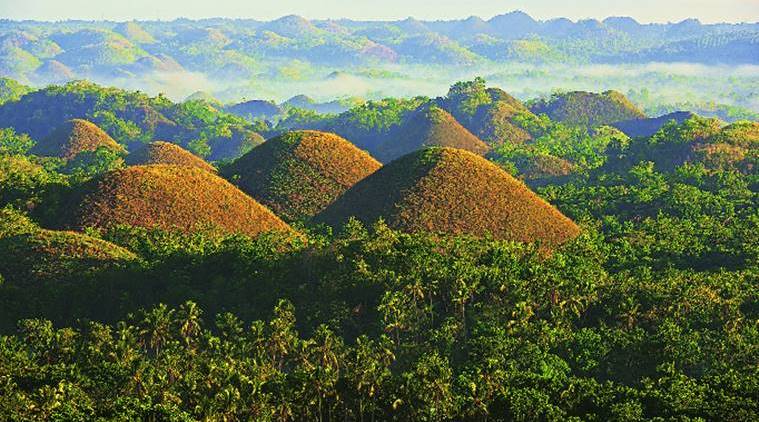A Bohemian in Bohol: A chance encounter with Chocolate Hills and Philippine gems
When a nature photographer stumbled upon Philippine gems. The author explores the Bohol Island in the Philippines’ central Visayas region, the hidden reefs, the sublime Chocolate Hills and the endangered Philippine tarsier.
 Chocolate Hills.
Chocolate Hills.
Diving into the crystal-clear blue waters circling the white sand beaches of the Bohol Island in the Philippines’ central Visayas region, and exploring the hidden reefs was on my mind until I came face to face with the sublime Chocolate Hills and the endangered Philippine tarsier.
Contrary to what one would have wished, the Chocolate Hills don’t produce chocolates. Its green grass turns brown in the dry season and hence the name. The tourist hotspot of more than 1,768 small hills, which actually look like giant mole hills, are spread over more than 50 sq km area and are made of the limestone left over from coral reefs during the Ice Age, when the island was submerged. I reached there early one morning to capture the mesmerising view in golden light once the thin layer of fog cleared up.
 Soft corals of Bohol reef.
Soft corals of Bohol reef.
The pull of the underwater couldn’t keep this photographer at bay for long. Vibrant coral reefs, big pelagic fish, reef sharks and macro marine life, Bohol has it all. I dived in straight and smooth, the lack of human civilisation in and around the waters a blessing in disguise, giving me good visibility and a chance to exchange greetings with the tiger tail seahorse and the world’s largest fish, whale sharks.
 A whale shark.
A whale shark.
But I knew I couldn’t leave the island without a look at the endangered Philippine tarsier, endemic to the region. The human fist-sized primate (though not the smallest in the world), with large bulging eyes, locally called mawmag/mamag, is a near-threatened species under conservation in the Philippines. They don’t survive in captivity or outside their natural habitat, in which case their life expectancy can reduce by two-12 years from their usual 24.
 A tiger tail seahorse.
A tiger tail seahorse.
 A Philippine tarsier.
A Philippine tarsier.
Their sore eyes would indicate poor diet, and they can get suicidal. A touch or a camera flash can stress them out, making them bang their heads against hard objects, and breaking their thin skulls. Tourists can see them but with necessary restrictions. If you are lucky like me, you can spot three in an hour at daytime at the Philippine Tarsier Sanctuary. The shy nocturnal animal mostly leads a hidden life. During the day, it sleeps in dark hollows close to the ground, near tree trunks and shrubs, deep in the impenetrable bushes and forests. When hunger pangs strike, they become active, mostly at night, prowling around for insects, spiders, crustaceans, among other creepy-crawlies.
- 01
- 02
- 03
- 04
- 05






























